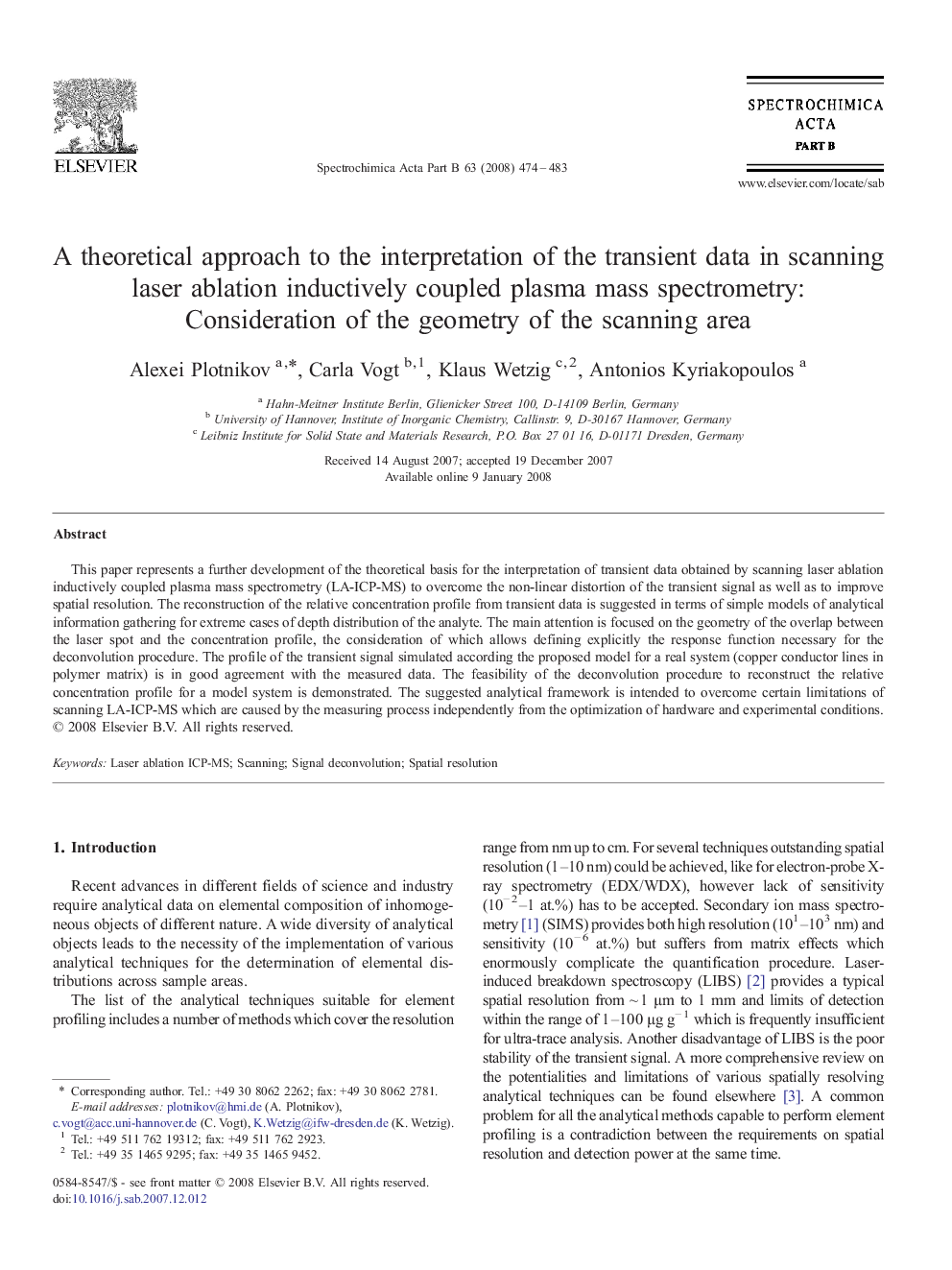| کد مقاله | کد نشریه | سال انتشار | مقاله انگلیسی | نسخه تمام متن |
|---|---|---|---|---|
| 1240458 | 969123 | 2008 | 10 صفحه PDF | دانلود رایگان |

This paper represents a further development of the theoretical basis for the interpretation of transient data obtained by scanning laser ablation inductively coupled plasma mass spectrometry (LA-ICP-MS) to overcome the non-linear distortion of the transient signal as well as to improve spatial resolution. The reconstruction of the relative concentration profile from transient data is suggested in terms of simple models of analytical information gathering for extreme cases of depth distribution of the analyte. The main attention is focused on the geometry of the overlap between the laser spot and the concentration profile, the consideration of which allows defining explicitly the response function necessary for the deconvolution procedure. The profile of the transient signal simulated according the proposed model for a real system (copper conductor lines in polymer matrix) is in good agreement with the measured data. The feasibility of the deconvolution procedure to reconstruct the relative concentration profile for a model system is demonstrated. The suggested analytical framework is intended to overcome certain limitations of scanning LA-ICP-MS which are caused by the measuring process independently from the optimization of hardware and experimental conditions.
Journal: Spectrochimica Acta Part B: Atomic Spectroscopy - Volume 63, Issue 4, April 2008, Pages 474–483